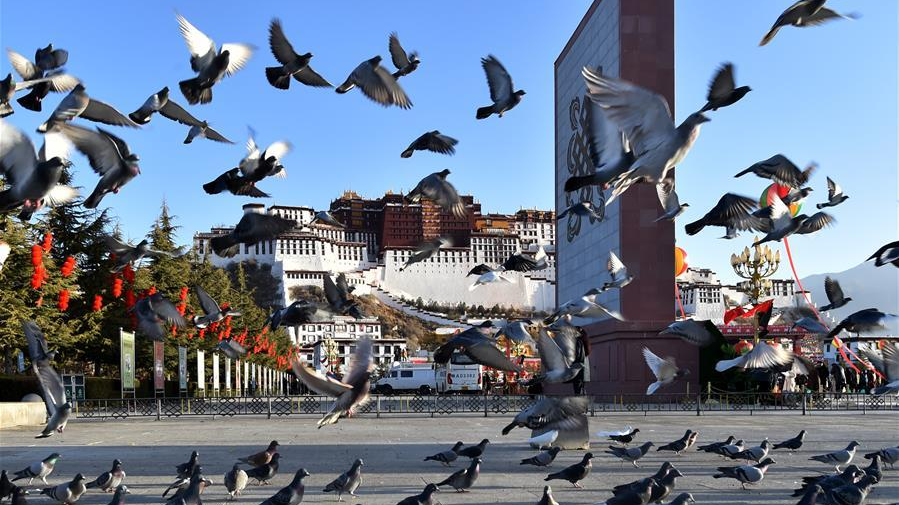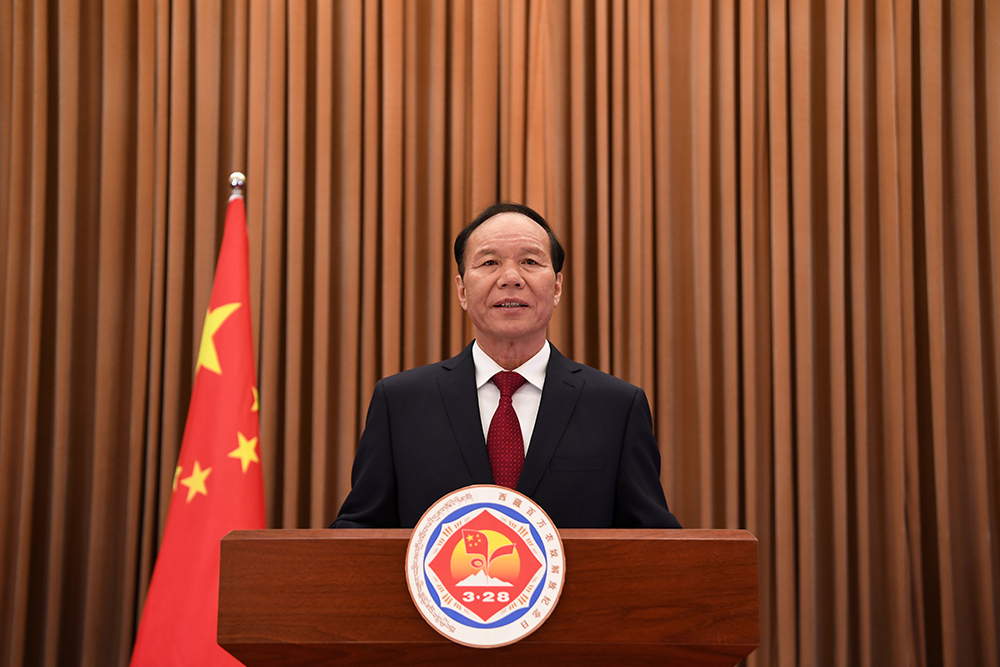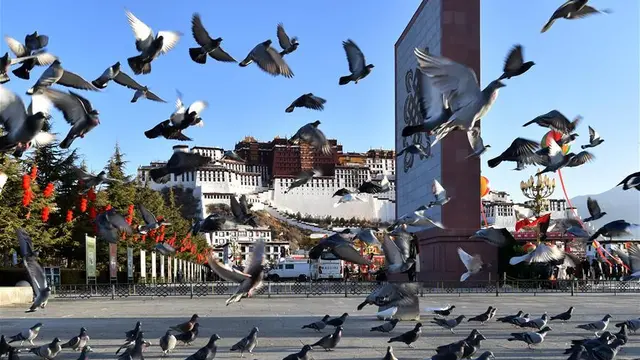This year marks the 62nd anniversary of the democratic reform of Tibet. On March 28, 1959, then-Chinese Premier Zhou Enlai issued a State Council Order declaring the "dissolution" of the government of Tibet, which effectively abolished the hierarchic social system and liberated about one million Tibetans from serfdom.

Potala Palace square in Lhasa, capital of southwest China's Tibet Autonomous Region, March 28, 2019. /Xinhua
Since the democratic reform that started 62 years ago, Tibet has made historic achievements and undergone tremendous changes, said Qizhala, chairman of the government of southwest China's Tibet Autonomous Region in a television address on Saturday.
He said that the democratic reform completely freed local people from feudal political oppression and changed the production relations of the old Tibet, enabling 3.5 million Tibetans shake off poverty and embrace new life.
Experts say the emancipation helped change the local economy by increasing the mobility of the labor force and thus enabling factories and other businesses to employ local residents. It is also a precondition for reforms in administration and local government.
Tibet: How China's toughest battleground defeated absolute poverty?

Qizhala, chairman of the government of Tibet Autonomous Region gives a television speech in Lhasa, capital of southwest China's Tibet Autonomous Region, March 27, 2021. /People's Government of the Tibet Autonomous Region
Qizhala said that currently, the main working-age population in Tibet now has an average of 10.2 years of education; a large number of Tibetans live in remote areas have moved into new homes built through the government's ecological relocation program, under which the government gives compensation and provides new homes for those who moved out the ecologically fragile areas.
Besides, the average life expectancy of local people has increased from 35.5 years in 1959 to 71.1 years nowadays, and the ecological environment has also improved: the comprehensive green coverage of the land has reached 47 percent.
"Today's Tibet is fully accessible to railways, airlines, highways, running water, power grid as well as internet," he said. "On the 1.2-million-square kilometers of land, farmers and herdsmen no longer have to worry about food, clothing, education and medical care. People are living a better life," he added.
 简体中文
简体中文





